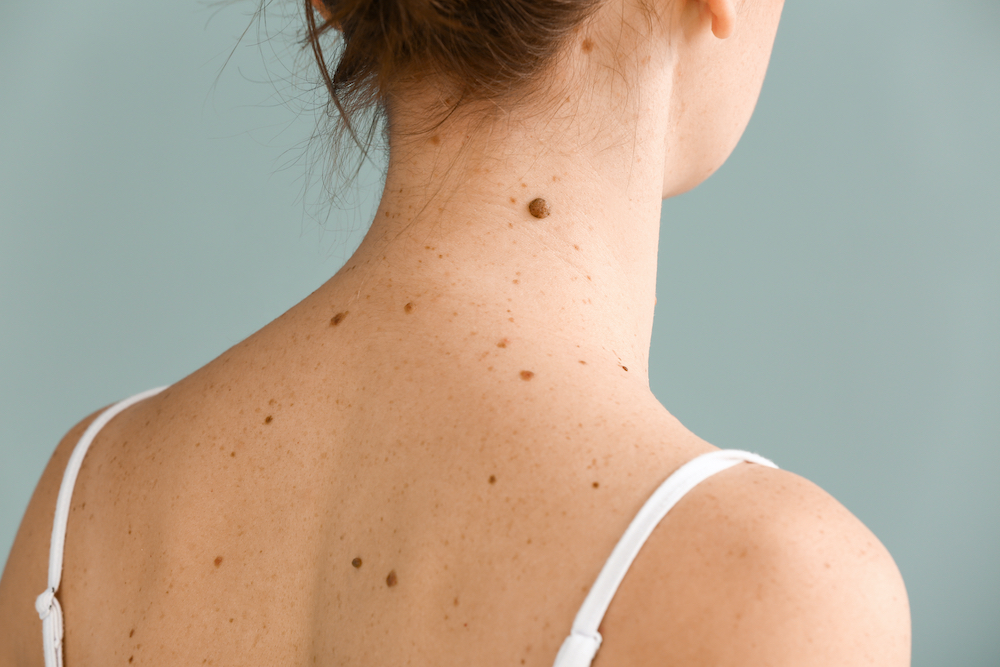Not All Moles Are Created Equal

Almost everyone has some type of mole on their skin. Most moles are simply part of the uniqueness of each person’s skin. However, in some cases, moles should be checked out by a local dermatologist to determine if it indicates something more serious. Some moles can be cancerous, and investigating existing moles is done during an annual skin cancer screening, but when is it time to see a professional outside of this visit? Dermatologists use guidelines to help clients determine when a mole may be cancerous and require treatment. Although moles should be on people’s radar, it does not mean every mole is life-threatening.
Moles Are Skin Growths
Moles grow on the skin and are commonly black and brown in color. Skin cells clustering together instead of spreading out across the skin results in the appearance of moles. Sun exposure and genetics can cause moles to appear anywhere on the body. Moles may be grouped together or alone and are easier to spot. In adulthood, most people have 20-30 moles somewhere on their bodies. Moles naturally change over time and commonly darken when exposed to the sun, and many women experience darker colors during pregnancy. Most moles are harmless, but some may be cancerous and dangerous if not treated.
How To Determine When a Mole is Normal
Normal or non-cancerous moles are not any specific shape, size, or color, making it challenging for an average person to know if a mole is normal. Moles can be flat or raised, and variations of brown and skin tones. Normal moles are typically round and smaller than a pencil’s eraser head. Normal moles may change color over time, but size and evenness will not.
Identifying Moles In Three Groups
Although most moles are non-cancerous, some types of moles have a higher risk of having cancer cells. There are three main areas in which moles are grouped. First, moles on the skin at birth that are larger than 20mm have a higher risk of turning into skin cancer and affect about 1 in 100 people. Second, moles acquired after birth are more common and do not typically turn into skin cancer. These acquired moles are smaller and evenly colored. Most adults will have moles, but mole counts more than 50 should be seen by a licensed dermatologist to make sure any moles that appear higher risk are addressed. The third group is atypical moles with irregular borders and different colors. Atypical moles typically appear in adulthood and are often hereditary. The more atypical moles an individual has, the higher risk some of those moles may be cancerous. However, it is good to know that most cancerous moles are treatable when caught early, so always try to visit a dermatologist for a skin cancer screening, usually covered by insurance.
Melanoma V Basal Cell Carcinoma
Melanoma is often found in moles and can be life-threatening if not treated. Regularly visiting a board-certified dermatologist for skin cancer screenings can save the life of someone with moles. Basal cell carcinoma is more common and highly treatable with high success rates, especially when caught early. Basal cell carcinomas appear in areas of the skin that get the most exposure to the sun, like the face, neck, and head. Basal cell carcinoma can appear as moles and may change quickly, which triggers concern in most individuals. Everyone is responsible for being aware of their skin and seeing a professional when something doesn’t seem right.
When To Visit Your Dermatologist About Your Mole
Since almost everyone has multiple moles on their bodies, it is often overlooked when a mole is acting abnormally or people do not prioritize getting it looked at by a professional. However, if you have a mole catching your eye, keep watching it to see how it changes so you can provide this information to your local dermatologist when you go in. Moles that become uncomfortable should always be seen by a licensed professional. It is standard practice to use the ABCDE rule when looking at moles, and this helps dermatologists determine if melanoma may be present.
If you develop a new mole after you turn 30, this is another time to visit a trusted dermatologist for help. Contact a dermatologist for any mole that is itchy, painful, or tender. Moles should not cause discomfort and definitely not bleed or ooze – this should be addressed immediately.
When it comes to your skin and your health, when making your annual visits, start incorporating a regular skin cancer screening. If you have a mole that concerns you, please do not wait to contact a trusted and experienced dermatologist for a consultation. Dr. Sherrie Straughn of Buckhead Dermatology takes skin cancer seriously and believes everyone should have the opportunity to successfully overcome skin cancer through early detection. Contact her today for an appointment.
